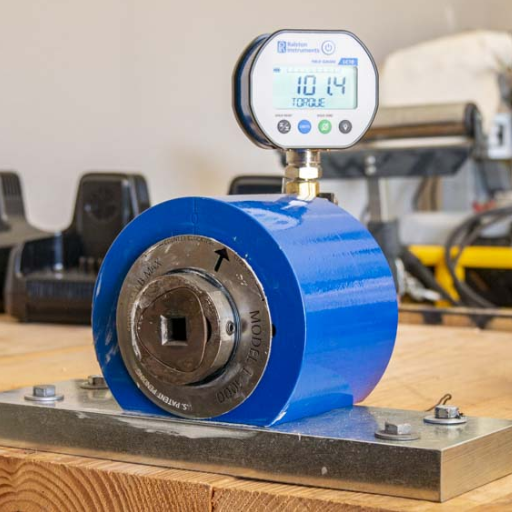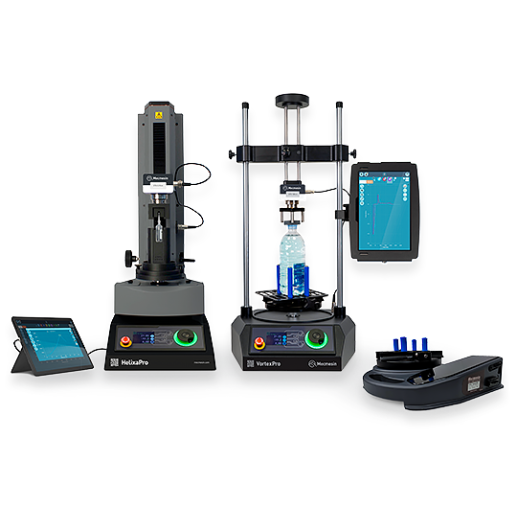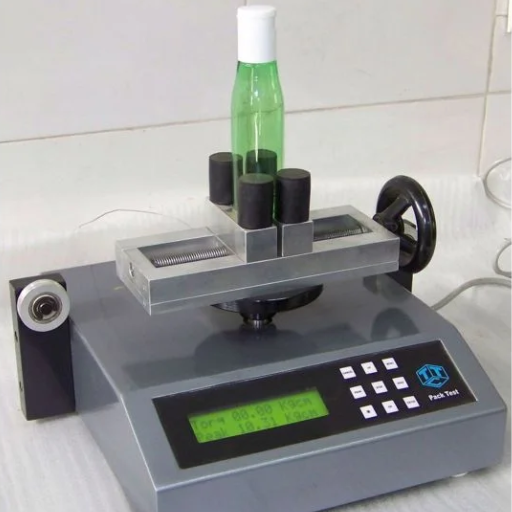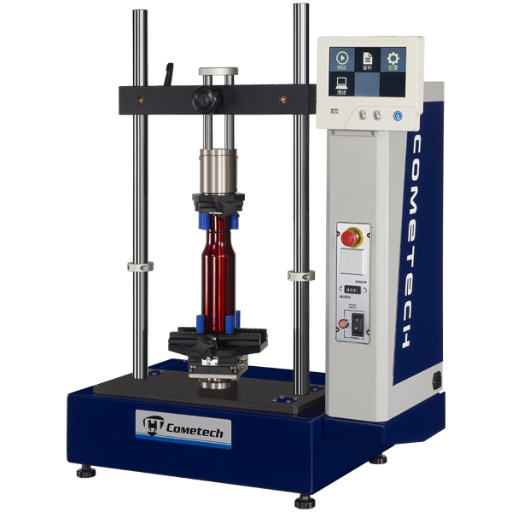Precision is very important in the sphere of mechanical engineering and automotive maintenance. It is significant to note that one indispensable tool that represents precision is called torque tests. This blog attempts to explain the extensive involvement of torque tests in validating the soundness as well as performance of various mechanical systems. The readers will fully understand why accuracy in measuring torque matters, once they read about how a torque test works, different types of torque measurements, and some applications of these devices in real life. If you are an experienced engineer or a mechanic or even someone who wants to know about how things function, this piece will surely give you an inside look at why it’s so important for mechanical reliability and efficiency to be maintained by using such type of analysis like torque testing.
What is a Torque Test?

Image source: https://www.protoolreviews.com/
A torque test is a test that measures how much of rotational force or torque has been applied on an object, usually a fastener such as bolt or nut. Torque tests make sure that the right amount of torque is applied so that there will be no under-tightening or over-tightening which could result in mechanical failure or inefficiency. Various industries such as automotive, aerospace and manufacturing require torque testing for reasons of preserving integrity, safety and performance of mechanical systems.
Understanding the Basics of Torque Testing
The measurement of twisting efforts used in fasteners to meet specific requirements is called torque testing. The key components of torque testing include sensors, transducers and analyzers. The sensors measure the forces whereas this electrical signal is transformed into an electric signal by transducers before it’s analyzed for compliance with required specifications.
Different techniques are used in torque testing including static and dynamic methods. Static torque testing happens when there is no movement involved often using a tool like a wrench. On the other hand, Dynamic Torque Testing involves determining the amount of Torque during motion mostly on assembly lines by use of rotational torque sensors.
Preventing issues like product recalls, fastener failures, and safety concerns necessitates proper Torque Testing. For example; in case precision matters especially in contexts like automotive and aerospace industries; it is essential to confirm whether assemblies are done correctly according to design intent through employing the procedure referred to as Torque Testing.
Why is Torque Measurement Essential?
The reliability and safety of mechanical assemblies across various industries depend on measuring torque. Precise measurement of torque helps preserve the integrity of fastened joints, thus preventing under tightening or over-tightening, which could result in failure of a component or render it operational inefficient. In high-stake markets such as automotive and aerospace, accurate control of torque is necessary to meet safety standards and ensure the best possible performance for machines. Product recalls are expensive but can be avoided through proper adherence to manufacturer’s recommended torques; this will also reduce maintenance costs while improving overall quality and lifespan.
Common Torque Test Results and Their Implications
- Pass/Fail Results:
- Implication: A pass/fail reading simply shows whether the measured value falls within a given limit for any torque. If inspection yields a pass, that particular fastener has met the expected torque specification hence chances for poor functionality are minimal with it. On the other hand, if inspections result in failures they have to be redone applying the right torque so as to prevent joint failure, product malfunctioning or safety hazards.
- Over-Torque Results:
- Implication: Over-torqueing occurs when applied torque exceeds its maximum limit. This leads to component damage, distorted fasteners, stripped threads and increased wear and tear. Over-torqued results usually indicate that adjustment should be made on torque application methods or tools in order to ensure preservation of assembly’s integrity and function.
- Under-Torque Results:
- Implication: Under-torqueing happens when less than what is required is applied as a turning force on a joint. Loose fasteners may occur causing rattling noise through bolt holes leading to joint separation in service and/or failure under operational stress conditions. Identifying cases where there has been insufficient tightening (under-torque) assists in maintaining secureness of all joints/fasteners thus securing overall assembly’s safety and performance levels.
How to Perform an Accurate Torque Test

To attain precise and reliable results, some crucial steps must be done when conducting a torque test accurately.
- Preparation: Confirm that the fasteners and the tools are clean and free from any foreign materials such as grease or oil which might interfere with the torque readings. Make sure that the device is in good condition and that it has been certified according to manufacturer’s instructions.
- Set Up the Torque Tool: Adjust the torque tool to match the required torque value for product or assembly purposes. Consider locking tool settings to prevent inadvertent adjustments during use.
- Apply the Torque: Apply the torque smoothly and continuously using a torque tool on a fastener. Avoid sudden movements or inconsistent pressure since they will lead to non-uniformity of measurements. For critical applications, controlled environments may be used to keep consistent application conditions.
- Record the Results: Once target torque has been reached, take down/ascribe/take note of/record/write down (the term “record” appears in input) what is shown by torque wrench. In digital tools, this might mean noting down their readout; in case of analog tools this would be looking at where pointer rests finally.
- Verification: Reapply tool and confirm same applied force measure is obtained. Taking several readings helps see disparities apart from confirming whether applied forces are accurate or not.
- Documentation: Keep all records concerning all tests including but not limited to tools used, environmental conditions and observations made. These documents are important for quality control purposes as well as traceability.
Following these steps meticulously makes possible an exacting test for tensile strength so that all fasteners tightened according to specifications making it safer, more reliable and better performing overall.
Steps to Properly Use a Torque Wrench
- Select the Right Torque Wrench: The correct torque wrench should have a torque range that is within the required limits. It is necessary to verify its calibration before any use.
- Adjust the Wrench: Set up your preferred torque wrench at the recommended amount of torque for each task. Many tools have adjustable scales which are supposed to be put in line with your desired value.
- Tighten the Fastener: Keep applying smooth and gradual pressure on the fastener until you hear or feel resistance indicating that the set threshold has been reached, or a click sound appears. Avoid jerky movements and using it as a ratchet.
- Double-Check: Verify Twice For an equal applied force, repeat step 3 above by reapplying the tool. In cases where precision is critical, this step is highly valuable for accuracy confirmation.
- Store Properly: After use, turn down the scale on your device so as to maintain accuracy. Store in a dry place to avoid damage and loss of accuracy during storage.
By doing these steps one can ensure accurate and dependable application of torque; which are crucial for maintaining integrity and safety of your assemblies.
Role of Torque Tester in Achieving Precision
A torque tester is an essential tool that aids in accuracy by ascertaining that torque wrenches and other fastening tools are appropriately calibrated and functioning properly. For example, the main use of a torque tester is to determine if a torque wrench can perform as per its specifications and deliver the amount of force required for different applications. This confirmation helps to maintain tool precision, which is vital for both performance and safety. Moreover, the good thing about using torque testers lies in the fact that they offer detailed measurement and data requirements necessary for quality assurance purposes or rather compliance with industrial norms. You can also prevent possible assembly breakdowns or keep integrity of these structures when you regularly test your assembly’s components’ strength with a calibrated torque wrench.
Another importance of using a torque tester in assembly operations is related to traceability and accountability. It keeps records of applied torques thus making it easy to review this history document for compliance issues and performance audits. In businesses where fine tuning of torques is critical such as aircraft engineering, automotive industries among others this recording contains crucial information for such sectors. Performing regular maintenance checks on tools especially using calibrating devices like a torsion meter safeguards against over-tightening or under-tightening machine screws thereby reducing risks associated with equipment failure.
To sum up, the significance of having torque testers cannot be underestimated since they help sustain precision, exactness, cautioniness while dealing with power applying gadgets. They support quality control activities, enhance security while also ensuring conformity to industry standards without which accurate application becomes meaningless in any situation where high degree of accuracy has to be maintained.
Best Practices for Torque Calibration
- Regular Calibration Intervals: Tools’ calibrations should be done at regular intervals to maintain their accuracy and reliability. The time when recalibration should be done varies with usage and manufacturer’s specifications but, one common practice is to recalibrate torque tools after every 5,000 cycles or once in a year.
- Environmental Considerations: Temperature, humidity, and vibration are examples of environmental factors that must be considered while carrying out calibration because they lead to inaccurate readings or failure of the torque tools.
- Use Certified Equipment: Only use calibrated equipment and ensure that certification is valid. These include torque testers as well as other calibration instruments that meet national or international standards as well as being regularly checked for correctness.
- Proper Handling and Storage: To avoid any damages on the torque tools, always handle them with care. Do not store them where they can get wet because moisture can damage them easily within a short duration of time when compared with dryness which could only affect their calibration. Therefore, proper handling will extend tool life and preserve its accuracy.
- Training and Documentation: It is important to have trained personnel involved in the process of calibration who know how to apply correct torque values. Keep accurate records of calibration results indicating any adjustments made so that you can meet industry requirements especially if you want it audited or performance measurement.
By implementing these best practices, manufacturers would enhance the quality and safety related to assembly processes thus ensuring precision and reliability of torque tools.
What Are the Types of Torque Tools?

There are a number of types of torque tools, each designed for specific applications and precision needs:
- Click Torque Wrenches: These are the most common type with a click sound or feel when the set torque is reached. They can be easily used and are suitable for a broad range of applications.
- Beam Torque Wrenches: These use a bending beam to show torque levels simply and in a robust manner. They are cost-effective and good for cases when high accuracy is not necessary.
- Digital Torque Wrenches: These tools offer high accuracy that is digitalized with data storage and alerts among other features as well as giving an exact measure of torque at all times.
- Dial Torque Wrenches: These have visual dial indication of torque and renowned for their high precision, uniformity most importantly in quality control application.
- Hydraulic Torque Wrenches: For heavy-duty industrial purpose these devices provide hydraulic pressure driven powerful torque during high-torque application use.
- Torque Screwdrivers: These give precise control over fasteners especially for electronics and delicate assemblies.
- Pneumatic Torque Wrenches: Used commonly in assembly lines requiring repetitive tasks with constant torque, these air compressed tools are perfect where consistency matters most.
All kinds of torque tool serve their respective purposes best due to different unique advantages they possess depending on nature of work at hand.
Manual vs Power: Choosing the Right Torque Wrench
In choosing between the manual and power torque wrenches, it is important to consider your specific task requirements. Manual torque wrenches like click, beam or dial types offer accuracy and control which makes them useful in places where delicacy and preciseness are very important. These tools are small-sized and do not need any power source, thus making them more portable and usable in various surroundings.
However, there are also power torque wrenches such as hydraulic, pneumatic, and digital torque wrenches that are mostly used for high-torque applications or repetitive tasks. They give users uniformity as well as reducing their tiredness, hence suitable for assembly line purposes in industries. Also capable of handling more demanding works, these tools can be faster than the manually operated types. However, the choice of a particular tool will depend on factors such as required range of torques, frequency of use in operations, tolerance levels necessary for precision work as well as type of job setting.
The Importance of Digital Torque Tools
Torque applications have been significantly improved in terms of precision and functionality by digital torque tools. These tools are very accurate, providing real-time torque readings via digital displays that help ensure the right specifications on tightened fasteners. The risk of over-tightening or under-tightening is thus minimized, whose results might be equipment breakdowns or dangerous situations. Additionally, most digital torque tools tend to have programmable settings and data storage capabilities which facilitate keeping of records in details as well as meeting industry requirements. By storing and analyzing torque data, quality control and traceability for intricate assemblies get enhanced. Digital torque tools such as aerospace among others where accuracy is vital are therefore important in increasing efficiency and guaranteeing uniformity in performance.
Exploring Electronic Torque Analyzers
Torque tool accuracy in different industries depends to a great extent on an electric torque analyzer. They are used to check and measure the performance of tools for ensuring that they meet given standards. Key characteristics of electronic torque analyzers incorporate high accuracy, user friendly calibration abilities as well as data save and transfer capacities used in analysis as well as reporting. These are very essential in areas where accuracy is very important such as aerospace and automotive where even small changes in torque can lead to big losses. Regular calibration of torque tools using electronic analyzers enables companies to keep up with good quality control, increase their tools’ lifespan and maintain safety while observing industry regulations.
Why is Torque Testing Important?

The significance of torque testing lies in guaranteeing the accuracy and uniformity of its application across various fields. Proper torque testing ensures that equipment is neither over-tightened nor under-tightened, thereby avoiding damages, risks to personnel, and costly breakdowns. To maintain high-quality standards, comply with industry regulations, and improve overall safety and reliability in their operations, companies should test and calibrate torque tools regularly. Additionally, torque testing increases tool lifetime while reducing downtime thus boosting productivity.
Ensuring Quality Control in Manufacturing
In manufacturing process quality control relies on precise torque measurement to assure product integrity and operational safety. For example, regular verification and calibration of torque tools are called for in all quality control processes using electronic torque analyzers. These devices not only ensure the provision of accurate torque values but also enable one to anticipate potential problems before they result into product defects. The best sites stress integrating daily operations with the use of torque testing as it minimizes errors, maintains compliance with industry regulations, as well as ensures consistency among production runs. This comprehensive approach to torque testing enables manufacturers to deliver high-quality products while minimizing waste and increasing efficiency at large scale levels.
Understanding the Torque Required for Different Applications
Accuracy in assembling and durability of tools are therefore highly dependent on knowledge about different torques for various applications. Essential torque can vary widely based on the type of fastener, material properties and each industry standard. The best sites say that when searching for accurate torque values, you will have to start with looking through the manufacturer’s specifications or engineering guidelines. For critical applications, it is advisable to conduct empirical tests so as to establish the best settings for these torques. Torque requirements are adjusted per application like automotive industry; aerospace; electronics manufacturing among others to avoid either over-tightening or under tightening which can result into failures or safety problems. Businesses can improve product reliability, raise other levels of safety and comply with regulations by considering these factors and implementing accurate control of torque levels.
Avoiding Failures with Proper Torque Measurement
Proper torque measurement is essential to prevent failures and ensure the lifespan of assemblies. Accurate torque measurement, therefore, starts with selection of the appropriate torque tool for each application such as a torque wrench or screwdriver or even an advanced digital torque device. This can only be maintained by regularly calibrating these tools. Moreover, educating workers on how to use the torque measuring devices correctly and significance of adhering to prescribed torques limits are also helpful in preventing both under-torque and over-torque situations. A rigorous system for auditing the accuracy of torque ensures standardization and early detection of any changes which may lead to noncompliance with industry standards or product failure risks. This can help improve quality control systems, safety conditions at work places and lower expenses incurred in operating businesses through actual use of accurate methods when measuring torques.
Frequently Asked Questions (FAQs)
Q: What is a torque test, and why is it important?
A: A torque test measures the rotational force known as torque applied to an object, typically a screw or bolt. Torque testing is important because it ensures that the ideal torque level is applied, which is critical for safety and reliability in various applications.
Q: What types of torque measuring equipment are available?
A: Several types of torque measuring equipment can be used, including torque meter, torque wrench testers, and more advanced electromatic equipment co devices. The choice of equipment depends on the specific requirements of the application.
Q: Can you explain the term “series torque” in torque testing?
A: Series torque refers to a set or range of torque values that are tested to identify the optimal torque necessary for a particular application. It helps determine the torque required to return an object to its prestressed state.
Q: What are some common applications of torque testing?
A: Common applications include automotive manufacturing, aerospace, machinery maintenance, and power tools inspection. Torque testing ensures that the correct torque is applied to screws, bolts, and other fasteners, which is crucial in these industries.
Q: How does a torque meter differ from torque wrench testers?
A: A torque meter provides real-time torque measurements and is often used for monitoring torque continuously. Torque wrench testers, on the other hand, are designed specifically for testing the accuracy of torque wrenches.
Q: What are the different testing methods for torque?
A: Different methods include the loosening test, breakaway test, and residual torque measurement. These methods help assess the torque necessary for different stages of fastener application and ensure the accuracy of the applied torque.
Q: How can I perform torque testing for both manual and power tools?
A: For manual tools, torque can be measured using a torque wrench or torque meter. For power tools, specialized equipment may be required to measure the torque output accurately. It is essential to use the correct adapter for your specific tool to ensure accurate readings.
Q: Why is it important to test torque in a clockwise direction?
A: Testing torque in a clockwise direction often simulates the actual conditions experienced during tightening. Ensuring that the torque applied matches the specifications helps in preventing over-tightening or under-tightening of fasteners.
Q: Where can I learn more about torque and its applications?
A: To learn more about torque, its applications, and the various testing methods, you can contact us at electromatic equipment co. Our expert team can provide detailed information and guidance on selecting the right torque measuring equipment for your needs.
Q: What services does Electromatic Equipment Co provide?
A: Electromatic Equipment Co specializes in a wide range of torque measuring equipment, including torque meters, series torque testers, and more. We offer expert consultation, equipment selection, and on-going support for all torque testing needs. Feel free to contact us for more details.






